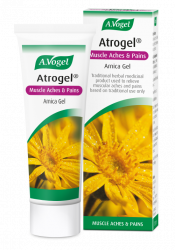The 10,000 step goal - where does it come from?
In the 1960s a Japanese company created one of the earliest pedometers. This device was called a Mano-Kei which translates to ’10,000 step meter’ in English. The company decided to promote the product in the lead up the 1964 Tokyo Olympics, in order to capitalise on the world’s focus on sport and exercise.
In the 1960s there was a lack of evidence to suggest that 10,000 steps would bring the most health benefits; it was just thought to indicate a healthy and active way of life.
This is where the 10,000 step goal derives from and, the fact that we still use it today highlights how successful the marketing campaign was.

Is taking 10,000 steps a day achievable?
Research for the BBC programme ‘The Truth about Getting Fit’ looked at the effectiveness of the 10,000 step goal. A group of volunteers, all of whom wanted to get fit, was split into two. Whilst one half had to complete 10,000 steps a day, the other had to do a ten minute speed walk, three times daily.1 Monitors fitted to the volunteers measured their achievements.
In the group aiming to do 10,000 steps, two out of three had achieved their target but admitted they found it difficult. On the other hand, those doing shorter, more regular walks found it much easier to achieve their goals because they could fit it around their daily tasks.
Will walking 10,000 steps improve fitness?
Achieving a goal of 10,000 steps a day indicates that your time spent sitting down is limited, and that you are taking regular breaks. This can only be a good thing for our health and fitness levels.
According to the company Fitbit, 10,000 steps equates to more than 30 minutes of exercise a day. Over the course of a week, this would result in more than 150 minutes of exercise, the recommended amount. Doing regular exercise will undoubtedly improve fitness levels.2

Problems with the 10,000 step goal
There is much research to suggest that 10,000 steps a day is a positive thing. A study of Scottish postal workers, for example, who did an average of 15,000 steps a day, found that most had good cholesterol levels, normal waistlines and low risk of coronary heart disease.3
Despite this, however, many experts question the extent to which 10,000 steps a day can improve our health.
It doesn’t take into account the intensity of exercise
In the BBC study discussed above, participants who did short walks had higher levels of moderate to vigorous activity compared to those who did 10,000 steps a day.1 Vigorous exercise is most beneficial for our overall health as it gets our heart rate and breathing up. This, in turn, has a positive impact on things like heart health and circulation.
This suggests that short bursts of intense exercise are more beneficial for our health than doing 10,000 steps a day. It also indicates that we should be focusing in on our pace, not our number of steps.
It can be intimidating
10,000 steps can seem like an intimidating goal and, as a result, it may discourage some from increasing their activity levels.4 If this is the case, then set yourself a lower goal and, over the course of a few weeks, gradually build up the number of steps you do.

It isn’t suitable for everyone
If you lead quite a sedentary lifestyle, then aiming to do 10,000 steps straight away is a bit of a leap. In this instance, track your steps for a week and then see what you average. From here you can set a goal that is achievable, but that still offers a bit of challenge.
Also, for those who are chronically ill, or who suffer from long term conditions such as arthritis, taking 10,000 steps a day is not always attainable. In this case, it would be advisable to speak to a doctor or physiotherapist to find more suitable activities.
Fewer steps can still bring benefits
Although many pedometers in phones and watches encourage us to do 10,000 steps, doing less than this can still bring plenty of benefits. Some studies suggest that between 6000-8000 steps, for example, can bring protection from the likes of cardiovascular disease.5 This suggests that the focus should be on setting a minimum number of steps, not a maximum.
It doesn’t take into account other activities
Measuring our step count throughout the day indicates our overall activity levels, but it does not take into account other activities such as an exercise class, a swim or a cycle. As a result, step count cannot be deemed an accurate representation of our overall fitness and activity levels.
Also, there may be occasions when we are exercising but don’t have a pedometer on and so, again, the device does not indicate our true exercise levels.
It is limiting
A goal of 10,000 steps puts a limit on the amount of exercise we do in a day – some people may stop exercising when they have achieved their 10,000 step goal, even though they could physically do more.
In addition, to benefit our health, it is unclear what the maximum number of steps will need to be. Therefore, until more research is conducted, we cannot suggest that 10,000 steps will bring the most gains to health and fitness.
It can become an obsession
Finally, have you got a relative or friend who likes to update you, step-by-step, on their progression to 10,000 steps? With pedometers now in many different types of technology, we can easily track our steps and, for some, this can become a bit of an obsession.
Top tips for staying fit and active
- Do a variety of activities – incorporating a range of activities into your routine will offer more benefits. This works different muscle groups, for example, as well as increasing endurance, strength and balance.
- Spend less time sitting – stretching whilst watching television, taking regular breaks at work and incorporating more exercise classes into your free time can all help prevent a sedentary lifestyle.
- Start small – big exercise aims aren’t always achievable. For the most success start small and work your way up.
- Explore my Get Active hub – for further information about staying fit and active, take a look at my blogs ‘Exercising as you get older’ and ‘Get fit without going to the gym’.
My Top Tip:Balance Mineral Drink contains a useful mix of zinc, calcium, magnesium and potassium. This helps to replace any minerals lost through exercise, but also helps to support the muscles and joints.
|
References
1 https://www.bbc.co.uk/news/health-42864061
2 https://blog.fitbit.com/should-you-really-take-10000-steps-a-day/
3 https://www.ncbi.nlm.nih.gov/pubmed/28138134
5 https://bmcpublichealth.biomedcentral.com/articles/10.1186/s12889-018-5434-5





 Pour one sachet of Balance Mineral Drink into a glass containing 150ml of water or milk and then stir well. The drink has a natural strawberry flavour so is both refreshing and tasty!
Pour one sachet of Balance Mineral Drink into a glass containing 150ml of water or milk and then stir well. The drink has a natural strawberry flavour so is both refreshing and tasty!


